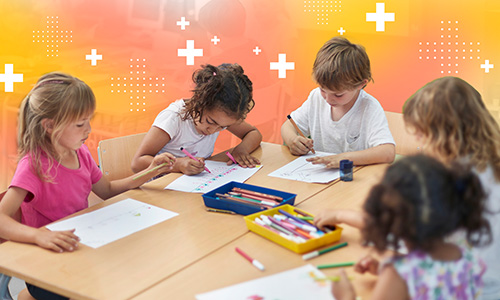 Since its founding, NWEA has focused its research on understanding the dynamics of student growth in schools. We have always believed that when educators and the communities they serve have insight into how much, or how little, students are learning during the year, they stand a much better chance of helping those students reach their potential. This is especially true among historically marginalized communities, in which schools may receive fairer treatment if we used growth in addition to achievement in school rating systems. Only using achievement creates a situation where schools are criticized based on the population of kids they serve. We can, and should, differentiate between a school with low achievement and high growth and a school with low achievement and low growth.
Since its founding, NWEA has focused its research on understanding the dynamics of student growth in schools. We have always believed that when educators and the communities they serve have insight into how much, or how little, students are learning during the year, they stand a much better chance of helping those students reach their potential. This is especially true among historically marginalized communities, in which schools may receive fairer treatment if we used growth in addition to achievement in school rating systems. Only using achievement creates a situation where schools are criticized based on the population of kids they serve. We can, and should, differentiate between a school with low achievement and high growth and a school with low achievement and low growth.
On behalf of NWEA, I’m pleased to announce the release of a new study and accompanying data gallery that offers perspective on the importance of both growth and achievement in evaluating school performance. In the report, “Evaluating the Relationships Between Poverty and School Performance,” we investigate how the use of achievement data as the predominant metric for determining school success may perpetuate education inequity in underserved communities and introduce bias against the work of educators who teach the children who live in them.
To conduct the study, Research Consulting Director Andy Hegedus examined the growth and achievement data from a randomly selected group of about 1,500 schools. The analyses include available school-level poverty indicators, such as free and reduced lunch status, as well as the School Challenge Index (SCI), developed by NWEA researchers in 2011, to account for factors such as geographic location, school type, and Title I eligibility. In addition to the report, the data has been compiled into a new Research Data Gallery that is available to the public. I encourage you to explore the visualizations and compare the findings to your school setting.
Here are a few key findings from the report:
The relationships between poverty and achievement and poverty and growth vary substantially
While there is a strong relationship between schools with high rates of poverty and low student achievement, as expected, there is a weak relationship between schools with high rates of poverty and low student academic growth. Schools designated as needing improvement based on achievement data may at the same time be producing tremendous growth.
 High poverty schools are showing high rates of growth
High poverty schools are showing high rates of growth
In schools with greater than 90% Free and Reduced Lunch, 60% of the schools generated above-average (greater than 50th percentile) levels of growth. A slightly larger percentage of high-poverty schools are creating substantial growth than schools in wealthy communities.
Low poverty schools are not growing students uniformly well
The assumption that students educated in low poverty schools are learning at higher rates is not necessarily true.
The report reinforces for me the need for us to consider the intersections between achievement and growth in our education policies, particularly when evaluating the success of schools and educators. Achievement data plays an important role in understanding school performance, particularly at the key transition points in education. Achievement indicates if students are meeting grade-level expectations, if they should be considered for enrichment programs, and if they are prepared for college. That said, the report confirms that there is a more accurate lens to view how much learning is taking place in our schools: growth. Student growth measures help educators influence learning through instruction and provide meaningful evidence of student progress across multiple points in time. Growth reflects the work of educators without introducing bias and provides a more accurate reflection of school performance.
We are continuing to research and develop new methods of bringing together insights on student achievement and growth. We look forward to sharing more of our work with you in the months to come.







